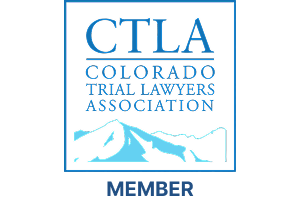Jackknife Truck Accidents
Jackknife truck crashes are frightening, fast moving events that can block multiple lanes of traffic and cause a violent chain of collisions. A jackknife happens when the tractor and trailer fold toward each other at an acute angle, usually during heavy braking, evasive maneuvers, loss of traction, or a combination of these forces. Passenger vehicles caught near the pivot point often experience sudden lateral impacts, underride risks, and secondary crashes as drivers try to avoid the swinging trailer.
At Cook Bradford & Levy, headed by trial lawyers Jason Levy and Brian Bradford, we investigate jackknife crashes with urgency, we preserve the key components before they are altered, and we prepare every case as if it will be tried. This page explains how jackknifes occur, which rules and safety standards matter, how the facts are proven in litigation, and what Colorado families can expect as an injury or wrongful death case moves forward.
What Is A Jackknife and Why is it So Dangerous?
A tractor trailer operates as an articulated system. The tractor supplies motive power and steering through the front axle, the trailer follows through a fifth wheel connection, and the pair must stay aligned to remain stable under braking and cornering. When the drive wheels of the tractor or the trailer axles lose traction, or when braking forces are applied unevenly, the rig can rotate about the fifth wheel and the trailer can swing out of line. That folding movement is a jackknife. It frequently starts with a skid in low friction conditions such as wet or icy pavement, but it can also result from hard braking at highway speed, a brake imbalance that locks some axles while others still roll, a sudden lane change in traffic, or a driver who enters a curve too fast and then brakes mid corner. Once rotation begins, stopping distance increases dramatically and steering authority drops. Nearby motorists face a sweeping trailer that can cross lanes or block the roadway entirely, and secondary collisions can be as destructive as the initial impact.
The Rules and Standards that Shape Jackknife Cases
Federal Motor Carrier Safety Regulations
Several federal rules often sit at the center of a jackknife case. Section 392.14 requires drivers to use extreme caution in hazardous conditions such as snow, ice, sleet, fog, mist, rain, or dust, and to reduce speed or discontinue operation if conditions become sufficiently dangerous. Sections 392.2 and 392.6 address compliance with state traffic laws and the scheduling practices that can induce speeding or driving beyond safe limits. Hours of service rules in Part 395 are designed to reduce fatigue that undermines reaction time and judgment. Part 396 requires motor carriers to systematically inspect, repair, and maintain vehicles, including brake systems, tires, lighting, and safety equipment. If a carrier fails to keep the equipment in safe operating condition, that failure often shows up first under heavy braking where the risk of a jackknife is greatest.
Braking systems, ABS, and maintenance
Modern tractors and most trailers are equipped with antilock braking systems that help maintain steering control and reduce the risk of wheel lock. ABS cannot repeal the laws of physics though. It is a tool that relies on proper maintenance, correct sensor function, compatible valves and modulators, and tires with adequate tread depth and inflation. If one side of a trailer brakes harder than the other, or if the trailer locks while the tractor continues to push forward, yaw forces can rotate the trailer around the fifth wheel. Routine maintenance, balanced brake adjustments, and prompt repairs are essential. Maintenance records, roadside inspection histories, and mechanic work orders often tell a detailed story about whether a jackknife was a random skid or the predictable result of neglected equipment.
Cargo securement and weight distribution
Federal cargo securement rules in Part 393 require loads to be secured so they will not shift or fall. They also imply a basic obligation to distribute weight so that the vehicle remains stable and under control during normal and emergency maneuvers. Too little weight on the tractor drive axles reduces available traction for acceleration and braking. Loads stacked high or set rearward increase the tendency to swing, especially when brakes are applied on a curve or lane change. Bills of lading, scale tickets, and driver statements help reconstruct whether the load was balanced and properly secured.
How Our Lawyers Build a Jackknife Case
Immediate preservation and scene work
The first hours matter. We move quickly to send preservation notices, to secure the tractor and trailer, and to document crush patterns, tire marks, yaw marks, and roadway gouges. When available, we obtain traffic camera footage, nearby business video, and dash camera files before they are overwritten. We gather the police report and supplemental diagrams. We identify and interview witnesses while memories are still fresh. This early work often yields time stamped facts about speed, lane position, braking, and weather that become anchors for expert analysis later.
Electronic data and paper records
Today’s fleets generate a deep electronic record. We request and analyze electronic logging device (ELD) data, driver hours of service, GPS and telematics, sudden deceleration events, lane departure alerts, and speed by segment where available. Many tractors record fault codes related to ABS performance or wheel sensor issues that can illuminate brake imbalances. We collect bills of lading, scale tickets, and load diagrams to evaluate weight distribution. On the paper side, we examine annual inspection certificates, driver pre trip and post trip inspection reports, and maintenance work orders. Together, these sources reveal whether a carrier complied with the rules or simply hoped that worn parts would survive another run.
Mechanical and human factors experts
We retain accident reconstructionists to model the roadway geometry, friction, speeds, and braking inputs that produced the jackknife. Mechanical engineers evaluate brake system balance, ABS function, and the condition of air lines, slack adjusters, drums or rotors, and tires. Human factors experts consider perception and response times under fatigue or distraction and evaluate whether the driver had sufficient sight distance and time to avoid hard braking in the first place. When appropriate, we consult meteorologists to reconstruct pavement temperature, precipitation, and visibility. Expert testing with exemplar tractors and trailers, or instrumented inspections of the actual rig, can demonstrate how a modest design or maintenance change would have avoided an uncontrolled swing.
Connecting rules to responsibility
Rules do not decide a case by themselves, but they provide a useful yardstick. Section 392.14 requires extreme caution in hazardous conditions, which often translates into a lower speed and longer following distance. Hours of service rules focus jurors on whether fatigue contributed. Part 396 maintenance duties explain what a safe trucking company does before a component fails on the highway. When a carrier’s scheduling practices pressure drivers to keep tight windows through storms, Section 392.6 speaks to the corporate choices behind risky behavior. We connect each rule to the facts so a jury can see who had the power to prevent the crash and how simple changes would have done so.
Frequent Defense Themes and How to Overcome Them
The unavoidable skid
Defendants often argue that a sudden patch of ice made the jackknife unavoidable. Colorado juries are instructed to consider all the circumstances. The presence of ice invites questions about why a tractor trailer was traveling at a given speed, why following distance was not increased, whether the driver could have slowed or parked, and whether the carrier had policies for weather shutdowns. Evidence that other heavy trucks successfully maintained control in the same conditions can be powerful proof that the skid was not inevitable.
The blame shift to other motorists
A common narrative is that a small car cut off the tractor trailer and forced hard braking. Sometimes that is true. Sometimes the electronic data reveals that the truck was already following too closely for conditions or was traveling at a speed that left no room to react. Telematics, dash video, and witness statements can distinguish a genuine emergency from a foreseeable traffic pattern that required earlier speed management.
Steps For Families After a Jackknife Crash
Seek medical care right away, even if you feel mostly shaken up. Some injuries do not declare themselves immediately. Keep copies of discharge summaries, imaging, prescriptions, and follow up instructions. Preserve photos of the vehicles and the scene if you have them. Avoid discussing the crash with insurance adjusters before you understand your rights and what the data shows. Contact counsel quickly so that the tractor and trailer can be preserved for inspection and so that electronic data is not overwritten. Early action protects the truth, and the truth drives outcomes.
Why Cook Bradford & Levy is a strong choice
Our firm is built around meticulous case building and courtroom readiness. Jason Levy and Brian Bradford lead a team that is comfortable with the technical and legal layers of trucking litigation. We move fast to lock down evidence. We bring in the right experts and we speak their language. We prepare settlement presentations that reflect the same rigor we bring to trial, which often moves insurers to negotiate in good faith. When reasonable offers do not materialize, we are prepared to try the case so that a Colorado jury can decide responsibility and fair compensation. We represent real people, not insurance companies, and we are committed to practical communication with clients from the first meeting to the final resolution.
Frequently Asked Questions
What exactly causes the tractor and trailer to fold?
The most common triggers are heavy or uneven braking, loss of traction on wet or icy pavement, and abrupt steering inputs at speed. A brake imbalance, a disabled or malfunctioning ABS component, or a poorly balanced load can set the stage. When the trailer begins to yaw faster than the tractor can correct, the pair will fold at the fifth wheel and the trailer can sweep across adjacent lanes.
Is a jackknife always the truck driver’s fault?
No. A jackknife is a symptom of loss of control, not a legal conclusion. A driver who slowed appropriately for weather, maintained proper following distance, and encountered a true emergency may not be negligent. On the other hand, a driver who ignored hazardous conditions, followed too closely, or braked hard because of inattention can be found at fault. The evidence tells the story. Electronic data, witness accounts, maintenance history, and expert analysis are the tools that reveal why the loss of control occurred.
What if the truck company says everything passed inspection?
Inspection stickers and recent service entries matter, but they are not the end of the inquiry. We look beneath the paperwork at the condition of drums or rotors, pad thickness, tire tread depth, air system leaks, and ABS fault codes. A system can appear compliant but still be unsafe because a single component is out of tolerance. Courts allow juries to evaluate real world reasonableness, not only whether a paper box was checked.
We Uncover the Truth Behind Every Jackknife Truck Crash, Let Us Start Your Investigation Today
Jackknife truck crashes combine physics, human factors, and detailed mechanical systems. They demand rapid preservation, careful analysis, and a clear presentation of how the choices of a driver and a carrier produced the loss of control. Cook Bradford & Levy brings the experience and the courtroom focus that these cases require. With leadership from Jason Levy and Brian Bradford, we move quickly, we build with precision, and we stand ready to try the case when that is what justice requires.
If you or a loved one has been hurt in a jackknife crash, contact us for a free consultation. We will listen, explain your options, and start the work of securing accountability and full compensation.









